Ten years ago, I got a Pilot’s Certificate for one reason: to fly the backcountry. I’ve always loved the outdoors. It recharges me, and it’s a source of sanity and peace. I know a lot of you reading this feel the same.
These days most of us learn in a tricycle gear airplane such as a Cessna 172. And the main culture among bush pilots is that a tailwheel is what is required to land in these remote places and beautiful places. It gets frustrating to the non-tail wheel pilot that if you’re flying a nose wheel, then you’re some sort of pretender. The truth, of course, is that you can fly many types and sizes of airplanes into the backcountry and do so safely. Yes, even a “nose dragger”.
When I first started out I modified a Cessna 172 with 8″ tires on the mains and 6″ on the nose and flew for a year into all kinds of airstrips. I’ve even taken a PA-28 into some carefully selected dirt strips with no trouble.
I’m not gonna spend too much time lingering on the culture of tailwheel vs nosewheel. I just want to dispel the assumption some readers will make that they must fly a tailwheel to experience the backcountry. All that being said, I am a fan of flying tailwheel airplanes and I fly them into dirt strips regularly. This article just isn’t about them, it’s about Cessna 182s.
This last weekend I had the pleasure of comparing the capability and performance of two Cessna 182s in the Utah Backcountry. The first is a 1976 Cessna 182P with the heavy-duty nose fork (not Airglass) and 8″ mains with a 6″ tire on the nose. The abrasion boots on the elevator keep rocks from denting the metal, it has a stock Continental O-470S, stock prop, and no real backcountry mods.
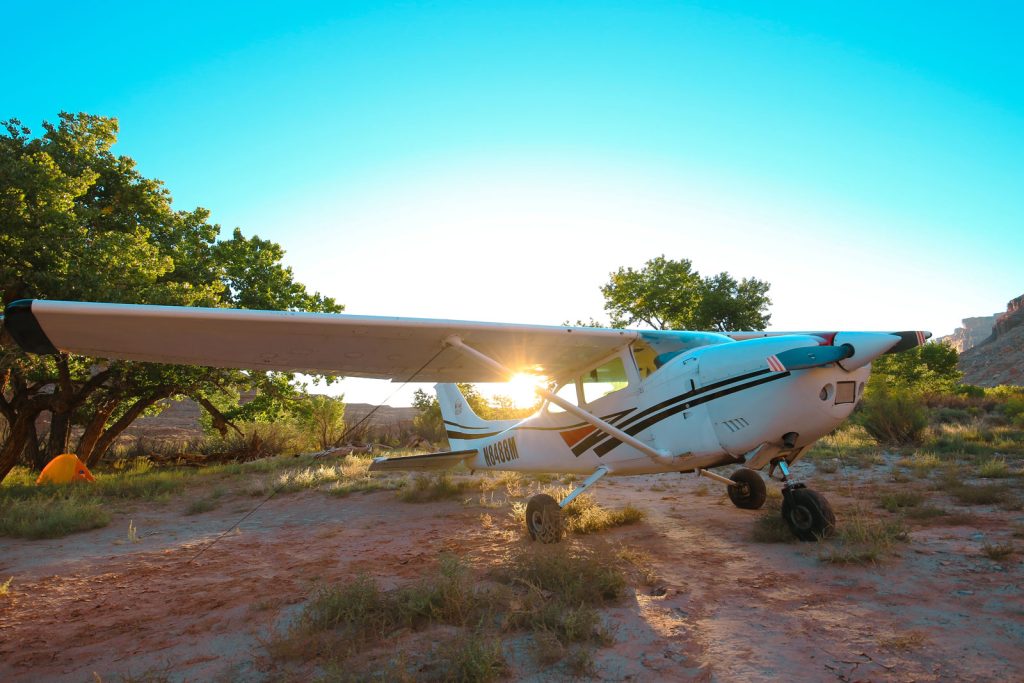
The second Cessna 182 is a 1965H modified with a Sportsman STOL cuff, Vortex Generators, an MT Composite prop, Challenger air filter, Knots2U cowling mod kit, Powerflow exhaust, 26″ Alaska Bushwheels on the mains with ABI double puck brakes, an Airglass lightweight nose fork with an 8.5″ nose wheel.

The airstrips we flew into were Mexican Mountain, Cedar Mountain, Hidden Splendor, Angel Point, Mineral Canyon, and back to Mexican Mountain where we were based. None of these airstrips are particularly short and that’s a good thing for a C182!
I was piloting the green 182 and a friend of mine, Alex, the red and black. My buddy was pretty new to Backcoutny and I am not.
The C182H
The first thing you should know is that the big tires turned the airplane from a utility vehicle into a fun machine. Yes, they did slow the airplane down quite a bit and anyone who tells you it’s only 5 mph is probably selling big tires for airplanes to pilots like us. Going from the 6s and a 5 to 26s and an 8.5 dropped a whopping 15 mph off the cruise speeds. It only makes sense, folks, if closing cowl flaps gives you 2-3 mph then imagine what dragging a couple of balloons through the air will do.
The STOL kit was a bit of a disappointment to me. Sure, it made slow-er flight possible, but with no authority to control the airplane and a disappointing reduction in take-off roll (10% improvement), I really was annoyed at the money spent for the benefit gained. I mean 60 hours of labor to put it on plus the cost of the parts… I don’t know… From all the hype I was expecting more. The addition of the Vortex Generators changed all of that. Suddenly I could control the airplane well past the stall and take advantage of the slow flight characteristics that the STOL cuff gave me. VG’s are not just worth the money, they are essential for these mods. My experience was so good with them that I got a set for my 1938 C85 J3 Cub and I love them on that airplane too!
The MT prop was, like the STOL kit, disappointing in some ways. Performance wise I really saw no effect. They say it’s “smoother:” but not really. They say it’s quieter: not that I can tell. They say it takes 16 lbs of weight off the nose: hell yeah it did, and I noticed big time! Apparently, that is not enough to completely compensate for how nose-heavy 182s are. It helped a lot. Did it help $17,000 worth? This a question for each of us to ask ourselves given our own financial situation. But, it looks cool and sounds cool at idle with that nickel edge whistling around.
Powerflow makes a good exhaust. I have used them on our smaller O-320s, 360’s and even the LEES (which they acquired) on my C-210. I have been pleased with the purchase every time. So I got it for my 182H. I had this put on at the same time I got the big 26″ tires and the 8.5″ for the nose. So it’s difficult to say how much it helped me out against the drag of the larger tires (I previously had 8.5s on the mains with a 7″ on the nose). I will say I saw an easy 150 fpm increase in climb performance from my home airfield elevation of 4735′ MSL. It also reduced the CHT’s on the airplane across the board by about 10 degrees. Another benefit is that it makes the airplane sound deeper and more powerful when at low RPM taxiing around the airport. Everyone thinks I have the big 520 on the airplane from the sound. It’s pretty cool.
The Challenger air filter provided a noticeable brightening of the aircraft’s power and for the money: sure, get it. Why not? I will say we have seen the same boost in power from the Tempest air filters that also allow more airflow (or perhaps it’s more accurate to say less resistance) into the engine. If you are wondering which one is better, I’m sure it comes down to a smaller difference than I am capable of telling. I will say that you do not have to oil your Tempest filter, nor wonder if it’s cleaning the air when the oil inevitably drys up.
The Knots2U cowling speed mod kit was also put on at the same time as the monster tires (again, I was trying to gain back as much cruise speed as possible) so I cannot definitely say it delivered on its promise of 3-4 mph in cruise. However, I can say it looks cool. It gives the older 182 a thicker chin that I like and it wasn’t that expensive. Your mechanic will complain about having to take it off when working on the airplane. They may even go as far as to say it doesn’t work to keep you from getting it. Ignore that talk. You pay them by the hour so, in the end, the joke’s always on you.
After all the above, the airplane performs as follows: at 6500′ MSL, it cruises at 130 mph IAS, and at 11,500 MSL it cruises at 119 MPH IAS.
Next, we did a Port and Polish on from Lycon promising up to 6 HP per Cylinder. Lycon told us it would be 6 weeks to complete once they got the cylinders. They did it in 5 Weeks. They told us it would deliver more power to the O-470R and it surely did. Did it make all 36 hp extra? Dunno. We don’t have a dyno to take the engine off and test it out. But we do have the performance numbers to compare and take an educated guess.
The climb rate increased by 300’/min) cruise speed by 10 MPH (6500′ 60F OAT, 2450 RPM, 140 ROP burning 14 GPH), and fuel burn went up by 3 GPH. This Cessna 182 is dragging 26″ tundra tires through the air at 156.8 MPH TAS. A little Slower than the 1969 C182 we have that’s stock except for flap gap seals (162 MPH TAS), and a little faster than our C182P (151 MPH TAS) with the 8″ tires on the mains.
The 182H stalls at 36 MPH IAS (yes you can get it to stall, you just have to dive for it). I can comfortably approach at 45 mph IAS with 11″ manifold and 40 degrees of flaps (30 degrees reduces the decent speed at the same power setting).
Useful load… it’s a 182 folks… I’m able to take plenty of food, water, people, fuel, and whatever with me. That’s one of the big advantages of the 180/182 platform for airplane camping. Lots of room and load for the cooler full of drinks and steaks.
Take-off performance with a 180 lbs pilot and 62 gallons of fuel @6200′ DA OAT 71 degrees is 382′. That depends on the pilot and their skills, of course, for instance, check out what a similarly moded C182 did when lightweight:
The C182P
The 1976 P model 182 has a different wing than the stock 182H. It’s cambered cuff wing over the older 60’s wings. This significantly improved the slow flight handling of the 182s in the 70 and later. If you have a 182 with the cuffed wing from Cessna, you might consider not getting a STOL kit since they basically have a “sudo-Horton” cuff already. Just add VG’s and you’ll be loving it. The Sportsmen is reported to outperform the Horton a bit. I have flown both and I think the Horton is pretty damn good too.
The 182P in this story has the 8″ mains and I think they are okay for the backcountry. All the airstrips we went to were chosen to accommodate the 8″ tires of our beloved 182P. We could have done some rougher ones if it had the 8.5-inch tires and a 7″ or even an 8″ on the nose. The 8.5s are significantly bigger than 8s for some reason, and in most of the places you will want to take a C182, the 8.5-inch tires will be great. I think the 26″ looks amazing but I’d really only recommend them if you are trying to turn your Cessna into a more toy-like machine and land it probably where you shouldn’t be landing a 182 (See firewall damage on 182s for more details). Realistically the 8.5″ tires look good and are plenty big for the 182 platform, IMO.
The 182P with the 8″ tires cruises about 5 kts faster than the 182H (This is before the port and polish by Lycon) at the altitudes we were at 12,000 down to 8,000 MSL and takes off in only 200′ more than the STOL 182. It lands longer mainly because it comfortably approaches at 50 kts (57.5 mph).
All that being said I love my 182H with all its STOL mods and I also love flying the C182P. It’s aggravating how close the 182P performs to the modified 182H, but still worth it to me because… well because airplanes are cool, and mods are cool, and the money is already gone so it doesn’t hurt anymore.
I suppose I just wanted the other pilots out there looking at modifying their 182s for STOL to know what to expect. It’s a lot of money for small improvements. But when you stack up all the improvements together you turn a good airplane into a real backcountry performer that’s comfortable and a whole lot of fun to fly and tell people about.
I do sometimes think that pilots who spend big $$ on mods have a hard time being honest about how little these things improve on our airplanes. Forums and even hangar talk tend to be “Oh it changed EVERYTHING” and “You gotta get one of these…” whatever it is-is. In our experience, you spend a lot of money for relatively small improvements. But each improvement adds up and in the end, you have a badass flying machine that is custom to you.
Bottom line is that the relatively stock 182P went to the Utah backcountry with the STOL 182 and did everything I did with ease. And it looked good doing it. A super-modified 182 just looked and did a little gooder.
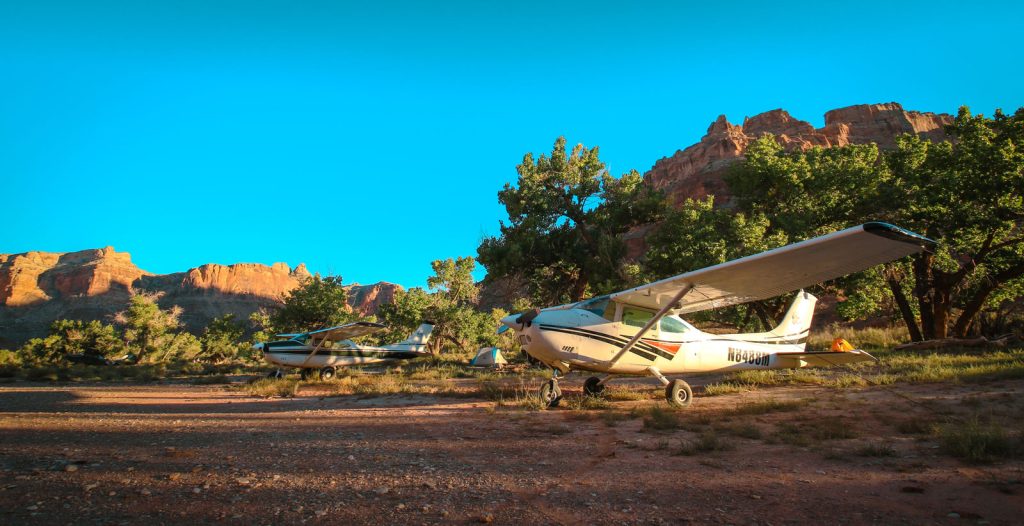
We also go to test out a P.PONK 182 or as it’s called, now the XP-470. For those of you who do not know that’s when you put a carburated O-520 on a Cessna 182. Typically Northpoint Aviation takes an O-470U and outfits it with the O-520 cylinders. There’s more to it, but I don’t want to get lost in the details. If you’re interested go over to their website where they have quite a bit of info on the engine.
This aircraft has the Sportsmen STOL cuff, VG’s, Wing-X extensions, a three-blade MAC prop, and has 8.5″ mains with an 8″ tire on and Airglass nose fork on the front. A beautiful airplane and it was an absolute pleasure to fly.
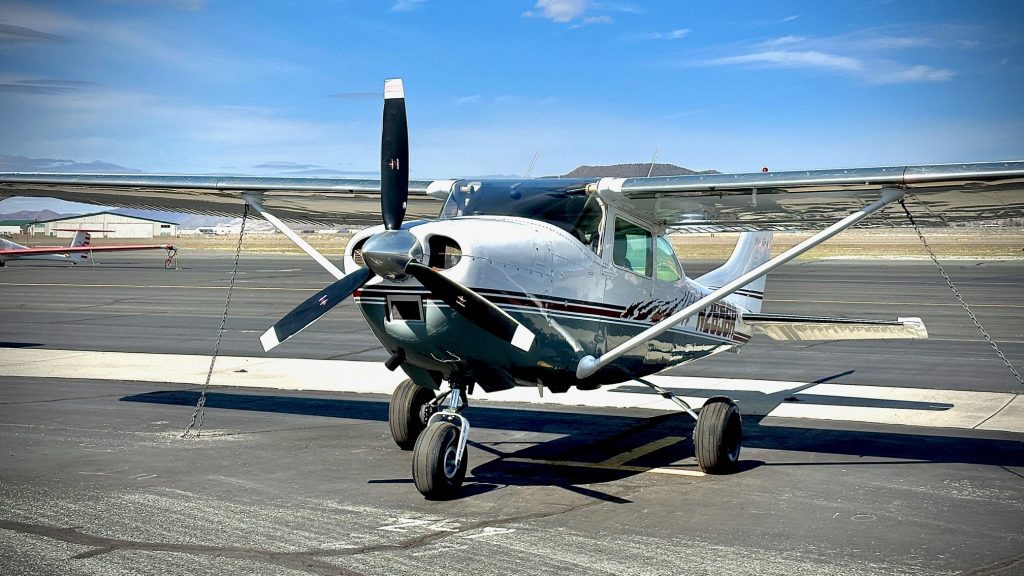
Flying the P.PONK was as advertised. Powerful, smooth, great climb. It’s like having a U206 nose on your C182. The climb performance was pretty equivalent at 60 mpg to the C182H with the STOL and P&P. At 70 mph the wing-x made gave the airplane a better ROC but with a nose-low attitude which made it feel like we were on an elevator shooting up into the sky! It was wild.
The Wing-X also made the roll rate feel sloppy and slow on the first flight. By the third and final flight in this airplane, I kinda got used to it and it stopped bothering me. I think if someone were to ask us if they should get one I’d have a short monolog for them about what works about it and what doesn’t. The short version is that if you have your airplane on floats or are a jump plane, or you need the tip tanks that can go along with it, then it makes good sense. If not, then I’d skip it. Although it was amazing to me how easy/quick it is to remove the extensions, put on your old wing tips and fly away. Stein Aviation really did a good job of making them a sort of option that you can swap out if you want. That’s pretty cool.
This airplane was about 5 mph faster than the C182H with the P&P running the 26″ wheels in cruise at 10,500 MSL and 2450 RPM.
The P.Ponk 182 liked 60 MPH for approach but I do think you could (with practice) knock 5 to 10 MPH off that. The nose was SO much heavier with that big engine and the three-blade metal prop that any slower and things get real dicey. This airplane liked 24-25 degrees of flaps for the shortest take-off roll and was about the same as my C182H.
The Continental 520s use a lot more fuel and so we saw 22 GPH on take-off from 4735′ MSL and 15.8 -16 GPH in cruise at 8,500′ MSL. Obviously, you can pull back the power and reduce RPM to save fuel burn but in cruise is where this airplane really outshined the other 182s so it was not our instinct to reduce power to save fuel. The extra weight on the airplane made it feel slightly more comfortable as we flew through the unsettled air over the Sierra Nevadas.
In conclusion, I think each aircraft has its strengths and weaknesses over the others. It is amazing to me how close to building the perfect Cessna that ole Clyde got with the stock 182. You can mod the “dickens” out of these airplanes and they do tilt toward your preference of mission you intend to fly. Backcountry or cross country, fly fast or slow. But it would be dishonest to say it didn’t do 80% of what you want, as is.






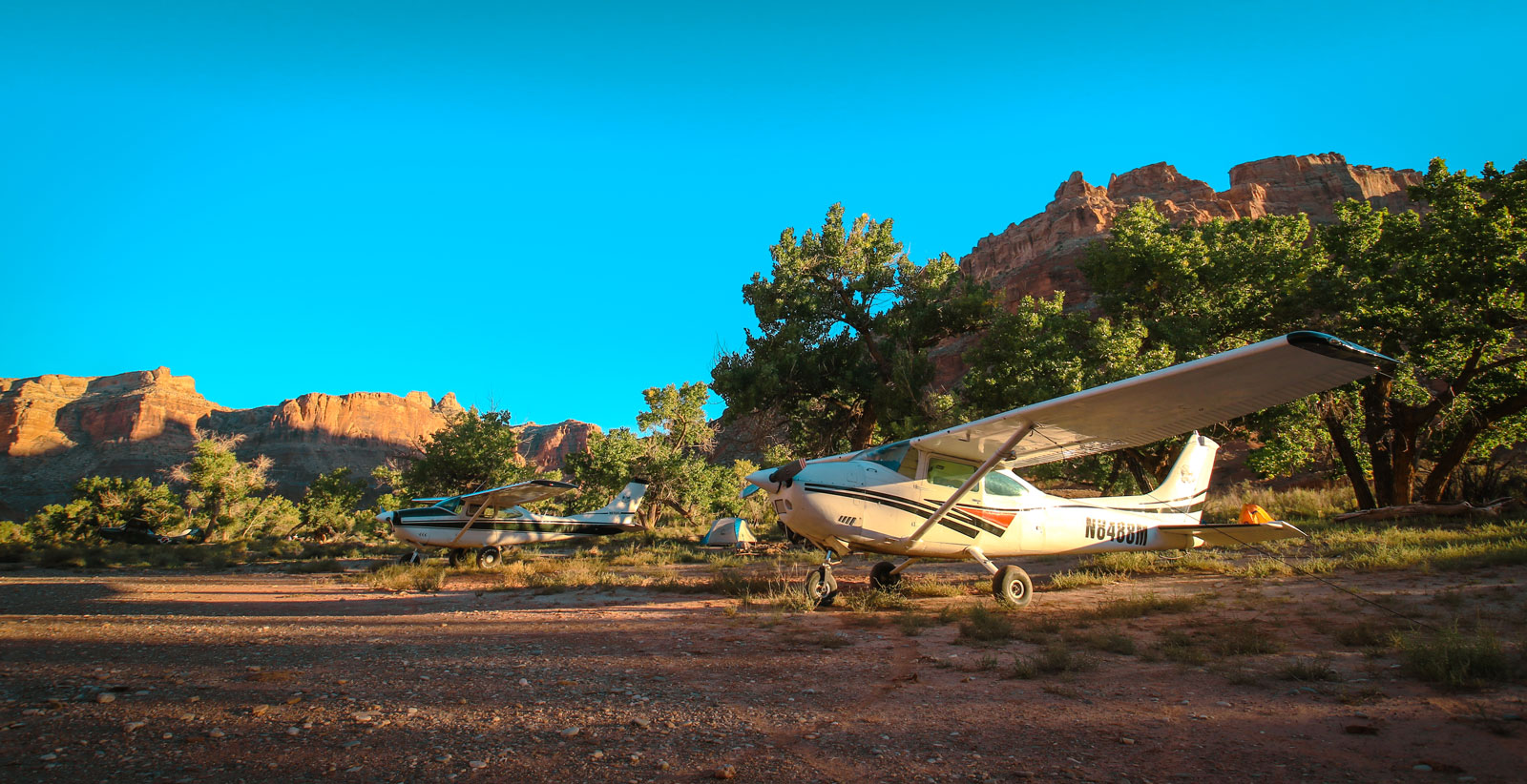




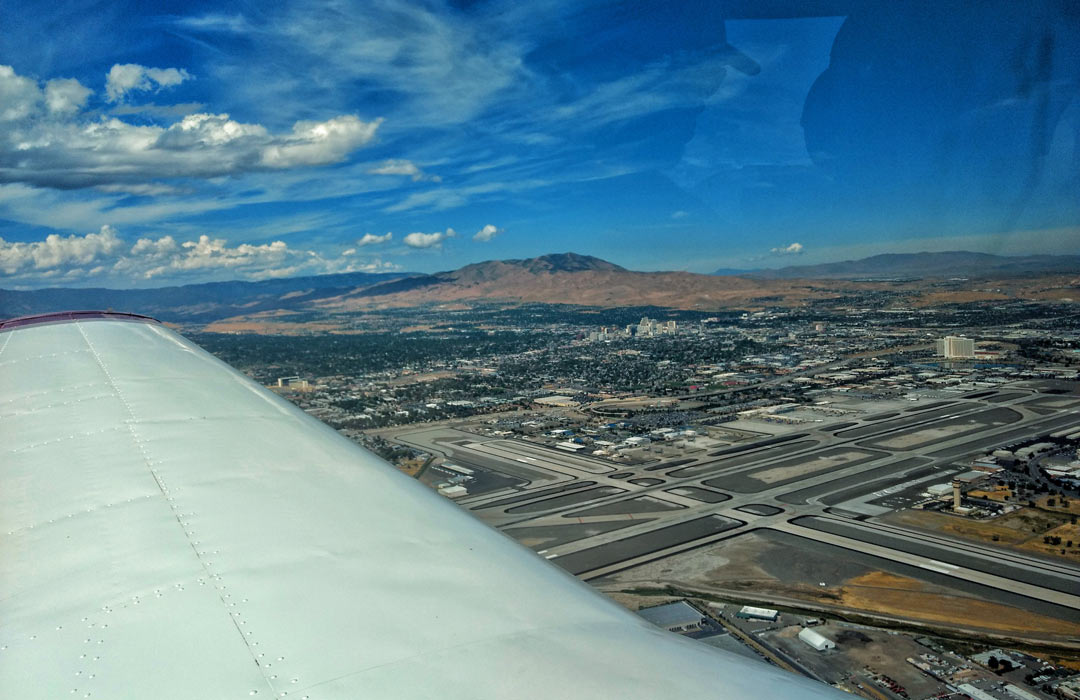


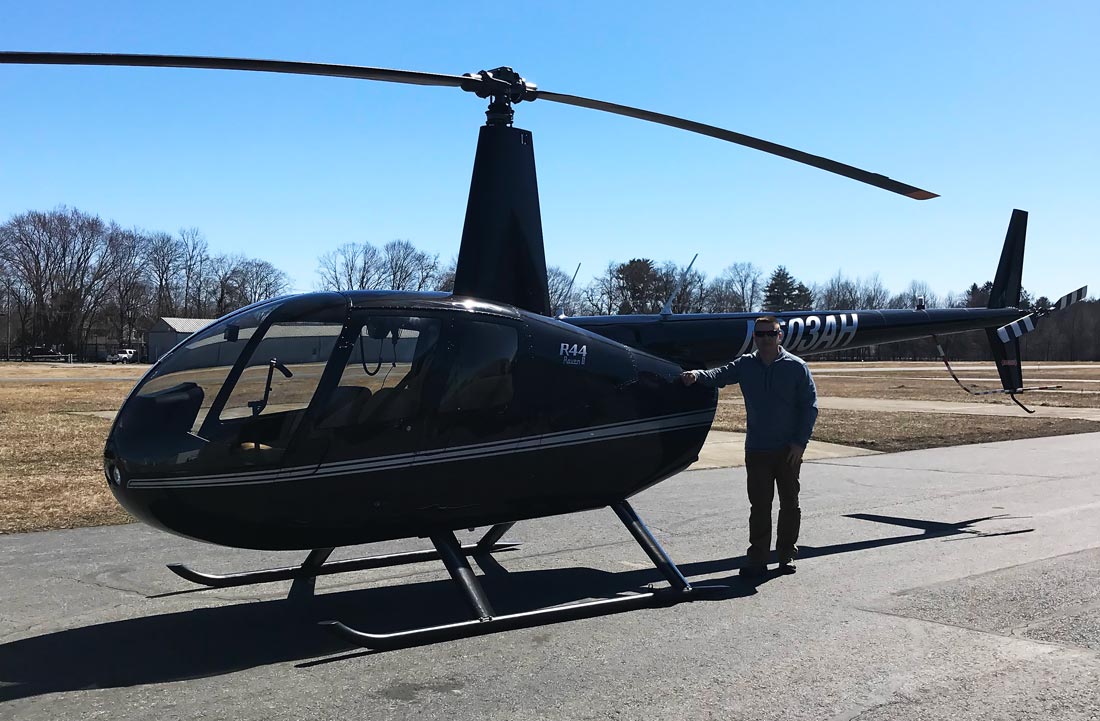
Thanks for the great article! My wife and I have a 1985 Cessna 182R with the Peterson IO-470F conversion and three-blade McCauley. She is nose-heavy like the P Ponk you are writing about but we have the firewall reinforcement kit. On small tires, we were still able to fly into Mineral Canyon although the nose tire really wanted to dig in on taxi. Probably going to find a balance of bigger tires with possibly still wheel pants at times since we fly a few times a year from Colorado to California, Oregon or Seattle. The hardest part of a 182 is the many different mod directions you can take it!